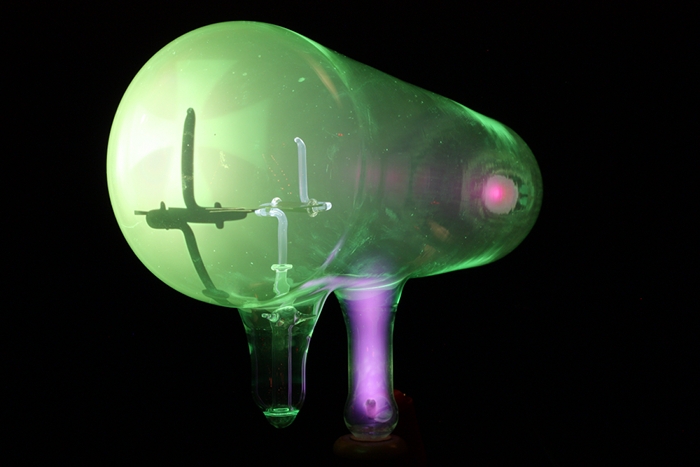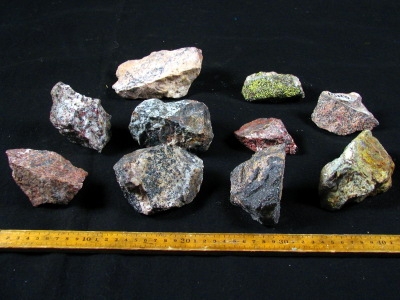What it shows
How could the fluorescence of the glass in a Crooke's tube generate x-rays? This was the question Henri Becquerel addressed in 1896. His experiments with fluorescence in uranium salts and subsequent discovery of radioactivity are recreated in this demonstration.
How it works
Instead of uranium salts, we use a green glass candy dish—the green glass being uranium glass, a popular consumer item in the 1950's! The green glass fluoresces brilliantly when illuminated by UV (a "black light") and, although not particularly "hot," a Geiger-Mueller counter held...
Read more about Green Glass Candy Dish

